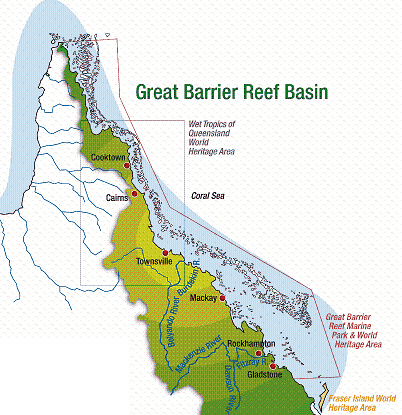|
|
|
|
|
|
|
News & Views item - June 2008 |
![]() A Good
Fish Story. (June 24, 2008)
A Good
Fish Story. (June 24, 2008)
 In
2004, the Howard Coalition government designated an area of 33% in the Great
Barrier Reef Marine Park as no-take zones, i.e. areas where all forms
of fishing are prohibited.
In
2004, the Howard Coalition government designated an area of 33% in the Great
Barrier Reef Marine Park as no-take zones, i.e. areas where all forms
of fishing are prohibited.
Such a large-scale ban on fishing is unique, but has it been effective?
ScienceNOW's Lauren Cahoon reports:
Fisheries biologist Garry Russ of James Cook University in Queensland, Australia, and colleagues compared fish populations right before and 2 years after the fishing ban was established. They surveyed 46 no-take preserves and 46 preserves where fishing was still allowed. Of the organisms surveyed, the coral trout staged the strongest comeback in the no-take marine preserves. The fish's numbers increased by 31% to 68% in the span of only 1.5 to 2 years, the team reports in Current Biology. What's more, the boost in coral trout numbers was widespread, occurring wherever a no-take preserve had been established. "I was personally stunned by the sheer scale of the positive response" to the ban, says Russ.
While the coral trout is the only species that can be said unequivocally to have recovered, Gary Russ says: "Our findings show that large-scale reserve networks, set up to protect biodiversity and ecosystems, can produce rapid positive responses for targeted species; it is an important lesson for the entire world."
Nevertheless, tropical ecologist Leanne Fernandes, director of Earth to Ocean, a marine resource management consulting firm in North Queensland makes the point: "The risk is that [no-take regions] may not be adequate, in the long run, to sustain the ecosystem as a whole" and notes that pollution, climate change, and water quality can also drive down fish numbers.
Praising the work marine ecologist Stephen Palumbi of Stanford University told Ms Cahoon: "It's like the Hubble telescope for coral science, and this study is the first snapshot from this telescope."